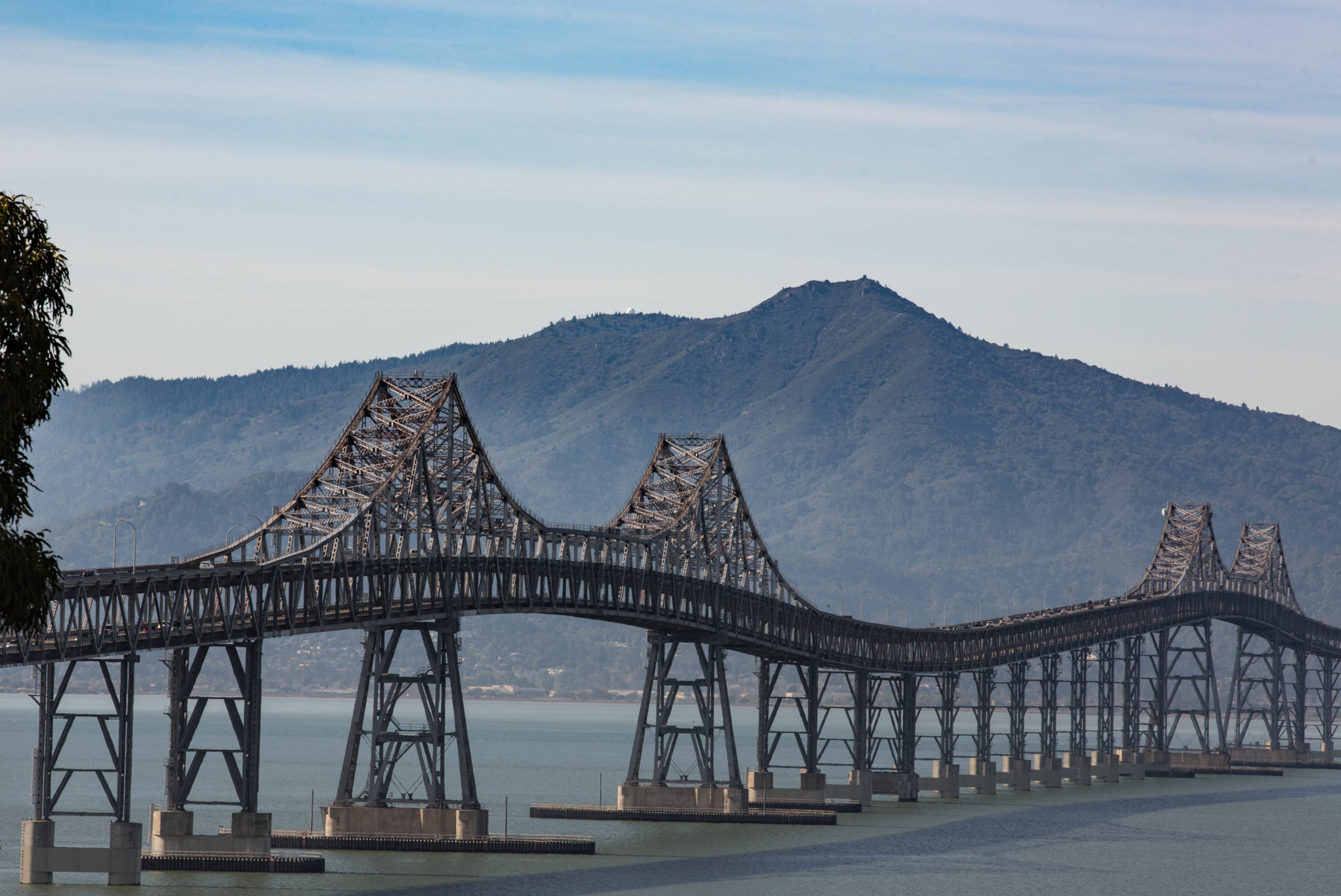Q. So what’s the topic?
A. I was thinking about driving up Interstate 5 and all those passes you cross.
Q. Yeah?
A. It’s a flat valley drive until you get to Redding. That’s 200 miles from the front door. Then there’s some climbing and lots of twisty parts around Lake Shasta. And then you go up some more, past Dunsmuir.
Q. Dunsmuir?
A. Dunsmuir’s about 50, 55 miles north of Redding. LIttle town on the upper part of the Sacramento River. Popular place during trout season. Elevation up there is about 2,500 feet.
Q. What then?
A. Mount Shasta. You can see the mountain way down in the Valley. Once we saw it clear down by Dunnigan, which is 180 miles down the road from the peak. But when you get into the hilly country around Redding, you lose sight of the mountain until you’re much closer. And then, bang, there it is.
Q. Big.
A. Very big. Very impressive. A 14,000-foot peak standing out there pretty much by itself. Anyway, the highway goes up past the town of Mount Shasta, which sits on the eastern base of the mountain. At about 3,500 feet. Then I-5 goes up crosses Black Butte Summit. About 3,900 feet. That’s the first real pass, maybe 50 miles south of the Oregon border.
Q. Black Butte?
A. It’s a volcanic cone of some kind. Next to Mount Shasta, it’s the most remarkable sight along that part of the road.
Q. OK. You’re still going north. What’s the next pass?
A. Well, the road loses some elevation first. You go through Weed, which is mentioned in passing in “Of Mice and Men,” the Steinbeck story. It’s a place Lenny and George had to leave before they landed in the Salinas Valley, where the story takes place. Then you go through Yreka, which ought to have a bakery because it it did you’d have a good palindrome. The road goes right up after you pass Yreka, up Anderson Grade. There’s a nice view of Shasta to the south, and somebody put a dragon sculpture along the highway there. You climb up to Anderson Grade Summit. Maybe 3,100 feet.
Q. Not a big deal?
A. Well, it’s steep coming up from Yreka, and the road winds, and there are plenty of slower trucks up there, and then the road plunges down toward the Klamath River. There’s an exit right along the Klamath with a rest area. Good place to stop, though I only remember doing it once.
Q. Still in California.
A. For a little while, maybe 10-15 miles. The road goes up and down for a while, you pass a weigh station, and then you start climbing again. The last town in California is called Hilt. Milepost 796, I think. And then you’re on the Oregon border.
Q. How far from home?
A. About 320 miles. That climb that starts in California is the Siskiyou Summit climb. That’s two syllables — SISK-you.The summit is the highest point on I-5, 4,300-some feet. Doesn’t sound that high — all the well-known passes in the Sierra Nevada are in the low 7,000 to 10,000-foot range. But Siskiyou is far enough north and gets enough wet weather in the winter to make it a barrier. I know plenty of people who’ve gotten stopped there during snowstorms. Or at least a couple.
Q. How about you?
A. Never. We always had great luck driving through there in winter. The road always seemed to be dry and clear when we went through on our way up to Eugene.
Q. Where’s the road go next.
A. There’s a steep drop with a couple runaway-truck ramps down to the town of Ashland, where the Shakespeare Festival is. Elevation there is probably 1,500 or 1,800 feet. Then you’re in a valley through Medford, the big town in the region. Then you noodle around through Grants Pass before you come to the three summits.
Q. Three summits?
A. Well, you hit them one right after another. I always tried to keep the order straight. Northbound, I think you hit Sexton Mountain first. Then … Stage Road, I think. And last … Smith Hill. I think the last is the highest, about 2,000 feet. Then there’s a little break crossing a valley, and then you hit a fourth pass, Canyon Creek, which is also not very high but has a long, long descent to Canyonville and then the Seven Feathers Casino.
Q. How many times have you done this drive?
A. Over the last four or five years maybe 20, 25 times. Enough to get to know it. That’s the last named pass that I know of, Canyon Creek. Though there are rivers.
Q. That’s a different species of geographic phenomenon. Which ones?
A. Well, from the south, you’ve got the Sacramento, which you cross and recross half a dozen times from Red Bluff up to Dunsmuir. Then the Shasta, which is a tiny thing, and maybe the Little Shasta. The Klamath. Bear Creek between Ashland and Medford; has enough water running to be called a river. The Rogue. The South Umpqua and the North Umpqua. The Coast Fork of the Willamette, and the southern end of the mainstem Willamette just as you get into Eugene. Maybe other rivers. But a whole bunch of creeks, too. One name that comes to mind: Jumpoff Joe Creek, north of Grants Pass before you go up Sexton Mountain.
Q. Creek names are a whole other subject.
A. True. We’ll get to them later.
Like this:
Like Loading...
